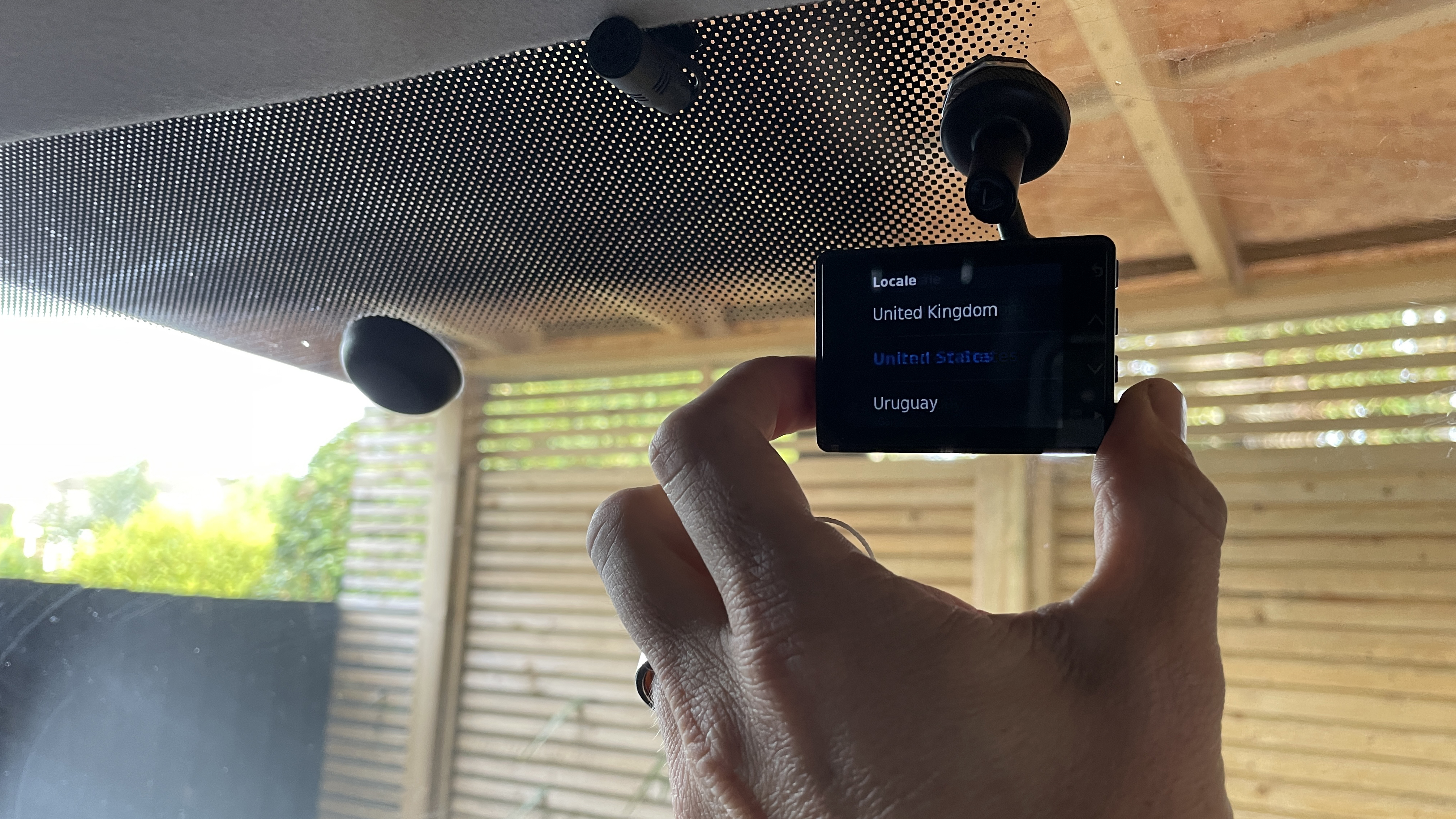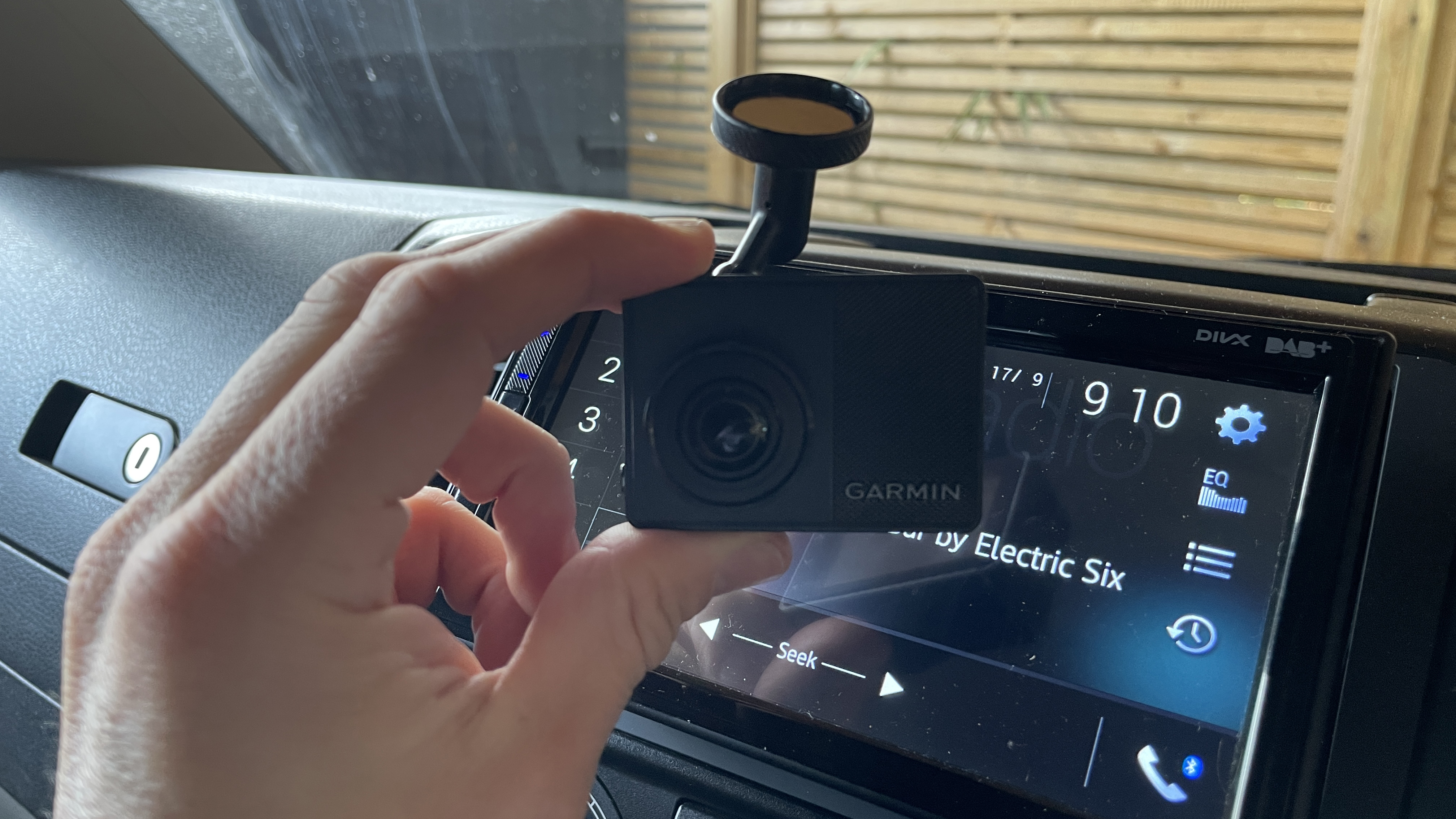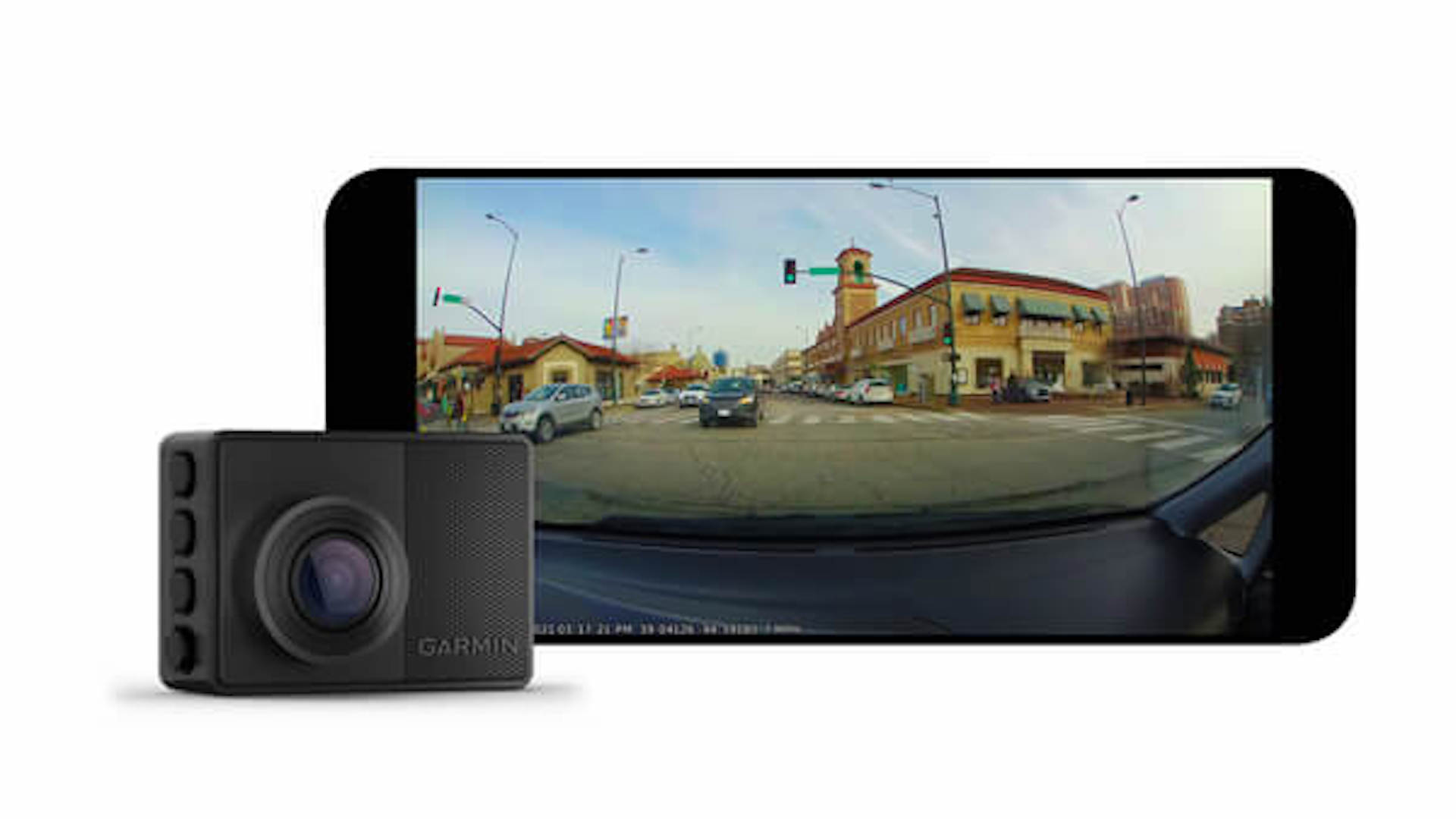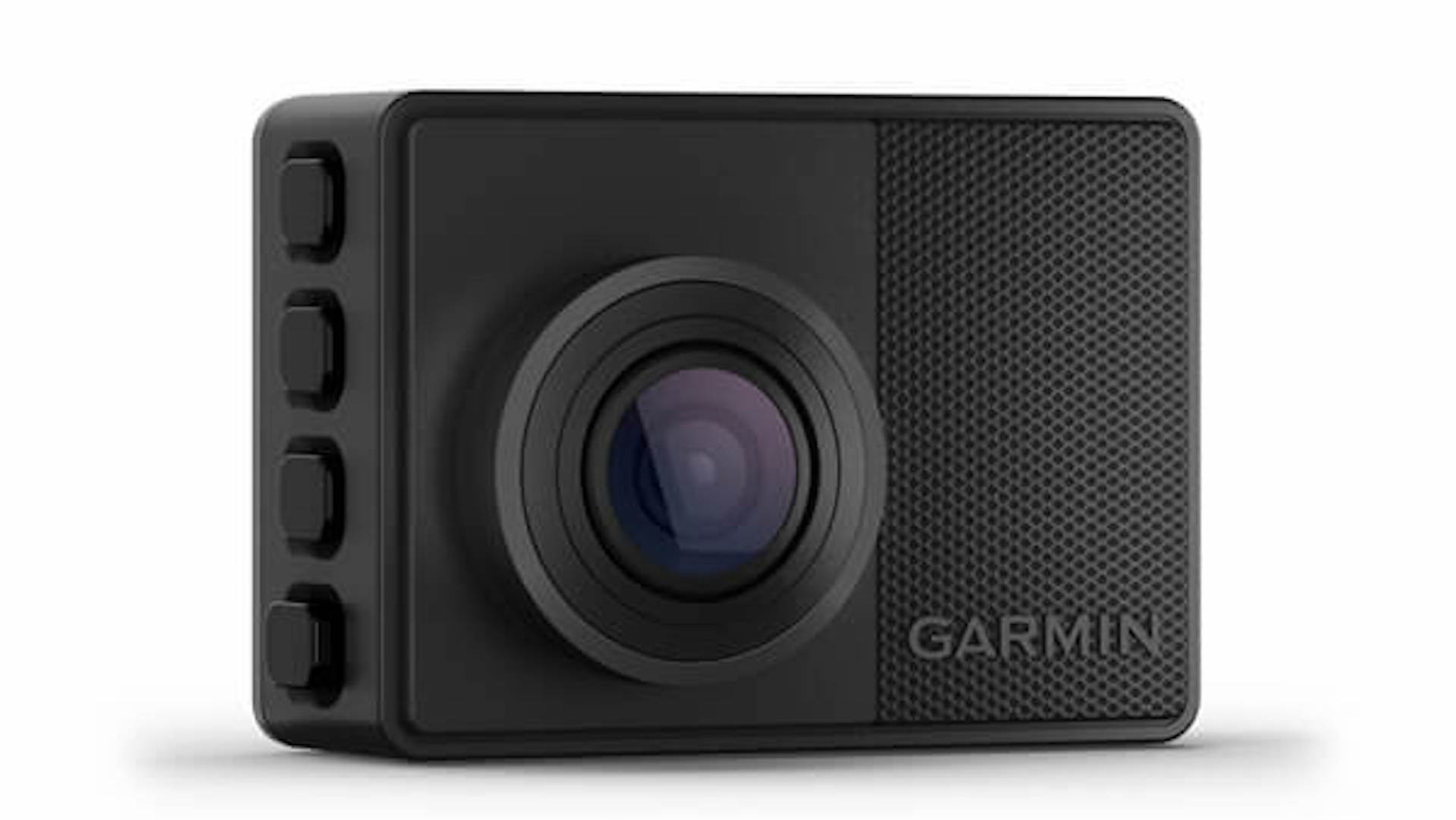Garmin Dash Cam 67W
Anyone with a penchant for cycling, running, hiking or pretty much any outdoor venture will likely be familiar with Garmin’s family of computers, smartwatches and navigational aids.
The thread that runs through all of these excellent pieces of tech is an equally brilliant and simple-to-use Connect app – which is, arguably, one of the best hubs for general health and wellbeing out there.
Thankfully, the tech giant’s expertise in this field has carried over to its Garmin Drive app, which, while not quite as slick and all-encompassing as its lifestyle-focused Connect software, is still a long way ahead of some of its clunky dash cam rivals.
The reason for banging on about this so early in the review is that the major difference between the 67W and the 66W it effectively replaces is its ability to connect to a trusted Wi-Fi source and make the most of its newfangled connected prowess.
The Garmin 67W is available to buy right now for £199 / $259.99 / AU$369.
Once online (you can trust multiple Wi-Fi networks, so it will theoretically work when you pull up at work, home, your nan’s and so on), the camera will automatically upload any saved clips to Garmin’s Vault Storage, where they'll be saved for 24 hours… or longer, if you sign up for a storage plan.
What’s more, owners can open up the Garmin Drive app and receive a live feed from the camera, even when the car is parked. Again, and we hate to be the bearers of bad news, this requires a constant source of power, so you’ll have to invest in a separate cable and hard-wire it into the vehicle’s battery or fuse board. Fun times.
But let’s not get too negative here, because the Garmin 67W is still a very good dash cam, packing in all of the high-end features we enjoyed in the 66W. These include crisp, 4K 1440p video footage, captured in both optimal lighting conditions and on those grey drizzly days, thanks to an HDR (High Dynamic Range) feature, similar to those found on modern smartphone cameras.

As with most dash cams today, the diminutive Garmin will automatically commit footage to a microSD card (which isn't included in the box) when the built-in G-Sensor detects an accident or shunt. It also records on a constant looping basis, overwriting any old footage that isn’t saved by the system, or manually by the user.
Interaction with the unit is via four small buttons on the side – but, remember, the 67W is about the size of a matchbox, so those buttons aren’t very big. From here, it’s fairly self-explanatory; the buttons deal with numerous in-camera settings, including the ability to turn off the additional forward collision warnings, lane departure warnings and other, frankly distracting, warnings.

The screen is only 2-inches wide, so it’s great for initial setup, but you wouldn't really want to be interacting with the unit or looking at the screen whilst driving. Chances are, you’ll tuck the brilliantly compact 67W up near the rear-view window, route its cabling correctly, and then leave it. It’s so small that it's unlikely to attract the unwanted attention of thieves when parked up, either.
Amazingly, the battery life runs for around 30 minutes when power is disconnected, but the camera will try to turn itself off as soon it detects that the ignition has been turned off. That means any longer surveillance tasks will require a fair amount of hard-wiring, but this is the same as any other rival that offers those “constantly connected” features.
The big difference between them and the Garmin Dash Cam 67W is that in order to make the most of Garmin’s smartphone app, the camera needs to be on a Wi-Fi network, which is achieved via Garmin Drive. I had a bit of trouble connecting to my home network; it took a few attempts. But it’s an easy enough task to repeat a few times.

This can be repeated with other networks, should there be one close to where you park at work, for example. Another option is to purchase a mobile hotspot and keep that in the car. So long as it’s charged (or connected to power), it’s possible to remotely access the camera wherever you may be. It’s a neat feature, but it certainly isn't a unique one, since the cheap-as-chips Vava 2K Dual Dash Cam we tried also offered the same service. Alternatively, the BlackVue DR750-2CH LTE even accepts a SIM card, doing away with the need for a mobile hotspot.


Should you buy the Garmin Dash Cam 67W?
Buy it if...
You want a tiny dash cam
At just over 5cm wide and 4cm tall, the Garmin Dash Cam 67W is compact and super-easy to stash somewhere discreetly on the windscreen. Where rival models might require adhesives and unsightly sucker mounts to affix the dash cam in place, you'll need just a small, adhesive-backed magnet for the 67W, which you’ll find in the box.
You crave constantly connected features
The ability to automatically upload any saved clips to the cloud might add further peace of mind for anyone needing to capture evidence of a crash or near-miss. But, be warned: Garmin will charge you for a storage plan, you’ll need to be near a Wi-Fi network, and the camera requires constant power.
You appreciate crisp footage
The 1440p resolution and HDR recording ensure good-quality footage, both in dazzling daylight and in the gloom of an autumnal evening. It’s possible to punch into number plates and generally spot minor occurrences thanks to the high-resolution video clips this tiny camera produces.
Don't buy it if...
You require all-round recording
It’s the front windscreen or nothing, since Garmin doesn’t offer the ability to add additional cameras, such as those that point out of the rear windscreen or cover the cabin. For that you'll need the Garmin Dash Cam Tandem, or we highly recommend the Viofo A129 Pro Duo.
You have bad eyesight
We’ve definitely mentioned this before, but the Garmin 67W is tiny, so that means the screen on the rear is equally minuscule. As a result, it can be fiddly to use when trying to press buttons and change settings in the car. The rear screen is good for initial setup, but it isn't much use after that.
You are the ultimate driver
The Garmin Dash Cam 67W features a forward collision warning system, lane departure warning, red light and speed camera notifications, and “Go” alerts bleeping at you when traffic ahead has started moving but you haven’t. Thankfully, these can all be turned off – but it doesn’t make it any less irritating.
0 comments:
Post a Comment